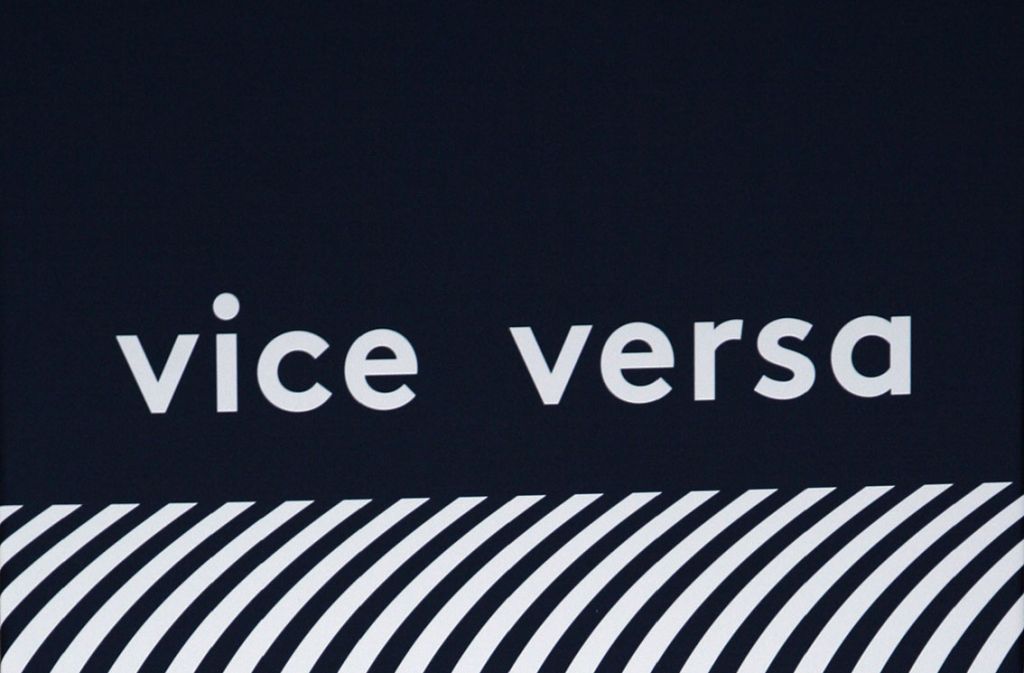Edition: 55. International Art Exhibition - The Encyclopaedic Palace directed by Massimiliano Gioni (1 June - 24 November 2013)
Title of the Italian Pavilion: Vice Versa
Curator: Bartolomeo Pietromarchi
Commissioner: Maddalena Ragni
Catalogue: Vice Versa, 55. Esposizione Internazionale d’Arte La Biennale di Venezia, Padiglione Italia, a cura di Bartolomeo Pietromarchi, Mousse Publishing, Milano 2013
The exhibition project by Bartolomeo Pietromarchi, conceived for the Italian Pavilion at the 55th International Art Exhibition – La Biennale di Venezia (June 1 – November 24, 2013), draws upon a concept theorized by Giorgio Agamben in the book Categorie italiane. Studi di Poetica (1996), in which the philosopher argues that to interpret Italian culture, it is necessary to identify a “series of polar concepts” capable of describing its fundamental characteristics.
Binomials such as tragedy/comedy, architecture/vagance or speed/lightness thus become original keys to interpreting works and authors that are fundamental to our cultural history.
Inspired by this vision, Vice Versa presents an exhibition path made up of seven rooms, seven environments, each of which hosts two artists in dialogue with one another, where the deep sense of this dialectical vocation is expressed in the works on display. The exhibition is an ideal journey through contemporary and historical Italian art, a route that tells of identities and landscapes – both real and imaginary – exploring the complexity and layers of the country's artistic and anthropological history. It is a portrait of recent art no longer interpreted as a confrontation between movements and generations, but as an atlas of themes and attitudes, traceable to the history and culture of the nation, in a cross-dialogue of correspondences, derivations, and differences, between figures of recognized masters and artists of the following generations.
The 14 artists involved in the project are: Francesco Arena, Massimo Bartolini, Gianfranco Baruchello, Elisabetta Benassi, Flavio Favelli, Luigi Ghirri, Piero Golia, Francesca Grilli, Marcello Maloberti, Fabio Mauri, Giulio Paolini, Marco Tirelli, Luca Vitone, and Sislej Xhafa.
The dual perspective on the landscape, where the meaning of place, suspended between vision and memory, emerges from the works of Ghirri and Vitone. The painful and contradictory relationship with history, expressed between personal and collective dimensions, is manifested in Mauri and Arena, who address, through the filter of the body and the performative dimension, the unresolved gaps in history. The dialectical play and constant shifts between tragedy and comedy are found in the works of Golia and Xhafa, always balancing between lived life and imagined life; a dimension also present in the works of Maloberti and Favelli, who make the boundaries between autobiography and collective imagination perceptible through references to culture and popular traditions. A dialectical tendency has always been part of the work of Giulio Paolini, who in this exhibition engages in dialogue with Marco Tirelli on the theme of art as illusion, as a perspective: an invitation to enter an additional dimension, forcing us to balance on the boundary between reality and representation. The exhibition's path also explores this play through the opposition between sound and silence, between freedom of speech and censorship, as seen in the work of Massimo Bartolini and Francesca Grilli, culminating in the works of Baruchello and Benassi in that tension between fragment and system, where the human ambition to archive and classify clashes with the impossibility and failure of doing so.
The exhibition presents works mostly created specifically for the occasion: installations, sculptures, paintings, performances, sound and environmental interventions – both inside and outside the Pavilion – giving back to our recent art that vital complexity, made of intuitions and contradictions, which, in the game of vice versa, finds one of its foundational elements.
Ultimo aggiornamento in data 20 February 2025


